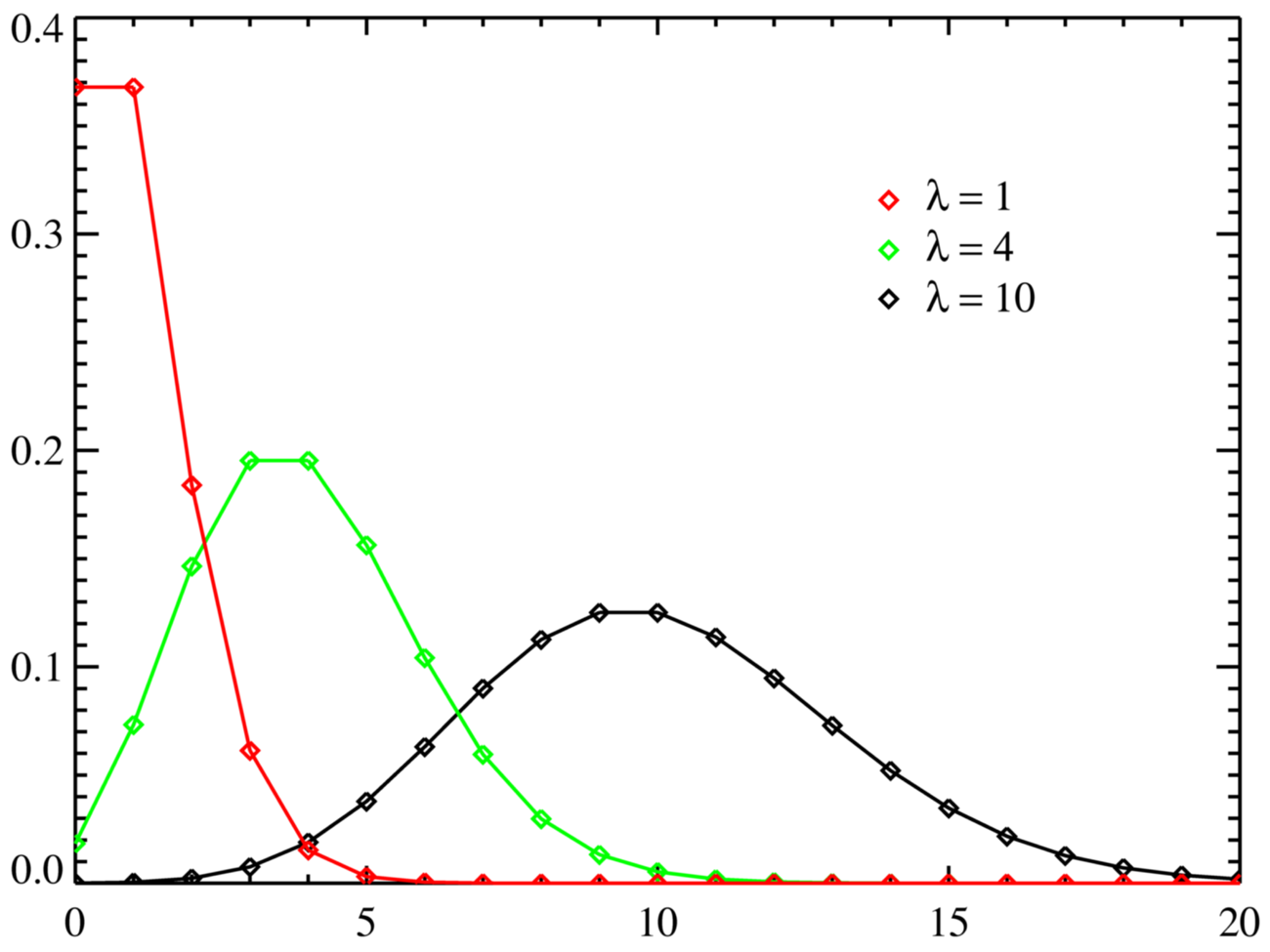What is the Poisson Distribution?
A Poisson distribution is a tool that helps to predict the probability of certain events happening when you know how often the event has occurred. It gives us the probability of a given number of events happening in a fixed interval of time.

Watch the video for the definition and a worked example:
Practical Uses of the Poisson Distribution
A textbook store rents an average of 200 books every Saturday night. Using this data, you can predict the probability that more books will sell (perhaps 300 or 400) on the following Saturday nights. Another example is the number of diners in a certain restaurant every day. If the average number of diners for seven days is 500, you can predict the probability of a certain day having more customers.
Because of this application, Poisson distributions are used by businessmen to make forecasts about the number of customers or sales on certain days or seasons of the year. In business, overstocking will sometimes mean losses if the goods are not sold. Likewise, having too few stocks would still mean a lost business opportunity because you were not able to maximize your sales due to a shortage of stock. By using this tool, businessmen are able to estimate the time when demand is unusually higher, so they can purchase more stock. Hotels and restaurants could prepare for an influx of customers, they could hire extra temporary workers in advance, purchase more supplies, or make contingency plans just in case they cannot accommodate their guests coming to the area.
With the Poisson distribution, companies can adjust supply to demand in order to keep their business earning good profit. In addition, waste of resources is prevented.
Calculating the Poisson Distribution
The Poisson Distribution pmf is: P(x; μ) = (e-μ * μx) / x!
Where:
- The symbol “!” is a factorial.
- μ (the expected number of occurrences) is sometimes written as λ. Sometimes called the event rate or rate parameter.
Example question
The average number of major storms in your city is 2 per year. What is the probability that exactly 3 storms will hit your city next year?
Step 1: Figure out the components you need to put into the equation.
- μ = 2 (average number of storms per year, historically)
- x = 3 (the number of storms we think might hit next year)
- e = 2.71828 (e is Euler’s number, a constant)
Step 2: Plug the values from Step 1 into the Poisson distribution formula:
- P(x; μ) = (e-μ) (μx) / x!
- = (2.71828 – 2) (23) / 3!
- = (0.13534) (8) / 6
- = 0.180
The probability of 3 storms happening next year is 0.180, or 18%
As you can probably tell, you can calculate the Poisson distribution manually but that would take an extraordinary amount of time unless you have a simple set of data. The usual way to calculate a Poisson distribution in real life situations is with software like IBM SPSS.
Poisson distribution vs. Binomial
The above example was over-simplified to show you how to work through a problem. However, it can be challenging to figure out if you should use a binomial distribution or a Poisson distribution. If you aren’t given a specific guideline from your instructor, use the following general guideline.
- If your question has an average probability of an event happening per unit (i.e. per unit of time, cycle, event) and you want to find probability of a certain number of events happening in a period of time (or number of events), then use the Poisson Distribution.
- If you are given an exact probability and you want to find the probability of the event happening a certain number of times out of x (e.g., 10 times out of 100, or 99 times out of 1000), use the Binomial Distribution formula.
Primes and the Poisson Distribution
There is a connection between the Poisson distribution and the prime number theorem: Short intervals of primes fall into the approximate shape of a Poisson distribution.
The Poisson Distribution formula is: P(x; μ) = (e-μ) (μx) / x!
Let’s say that that x (as in the prime counting function is a very big number, like x = 10100. If you choose a random number that’s less than or equal to x, the probability of that number being prime is about 0.43 percent. Furthermore, if you make that interval very short, with μx > 0 and j under about 20, then the number of primes in the interval roughly follows a Poisson distribution (Croot, 2010).
References
Beyer, W. H. CRC Standard Mathematical Tables, 31st ed. Boca Raton, FL: CRC Press, pp. 536 and 571, 2002.
Lindstrom, D. (2010). Schaum’s Easy Outline of Statistics, Second Edition (Schaum’s Easy Outlines) 2nd Edition. McGraw-Hill Education
Vogt, W.P. (2005). Dictionary of Statistics & Methodology: A Nontechnical Guide for the Social Sciences. SAGE.
Wheelan, C. (2014). Naked Statistics. W. W. Norton & Company